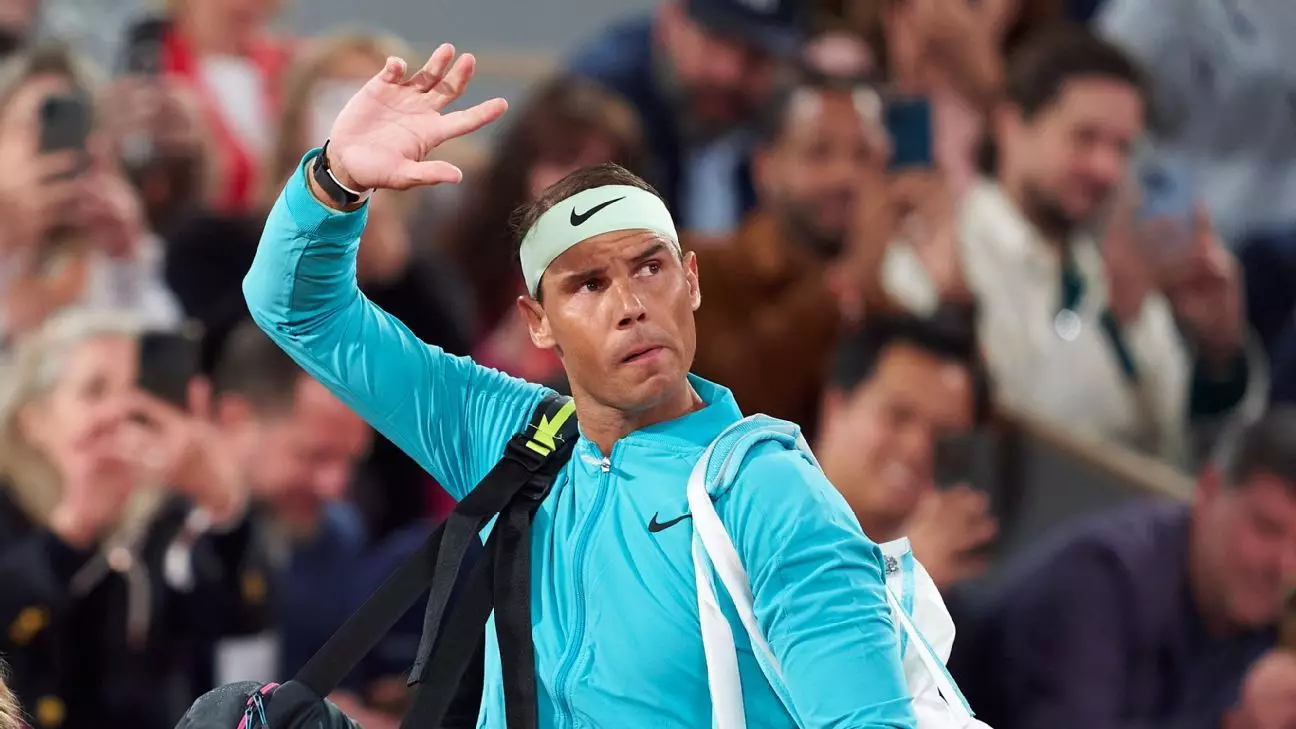The French Open, a cathedral of tennis tradition, is poised to honor one of its most illustrious champions, Rafael Nadal, during the opening day of the upcoming tournament. Set against the backdrop of Roland Garros, this tribute is not merely a nostalgic glance back at an athlete’s accomplishments; it represents an acknowledgment of the unparalleled impact Nadal has had on the sport. As he returns to a venue that has become a second home over the years, tennis aficionados worldwide are twinged with bittersweet emotions—celebration mixed with the recognition that they will no longer see him grace the court competitively.
Nadal’s 14 titles at this esteemed tournament are a benchmark that transcends statistics; they signify an era of dominance and resilience. Despite enduring a harsh early exit last year against Alexander Zverev—an unexpected conclusion to his illustrious career—the echoes of his triumphs linger within the clay of Roland Garros. The tournament director, Amelie Mauresmo, aptly summarized the sentiment, asserting that Nadal’s achievements have cemented his place in history without any rival in sight.
A Day Engraved in History
The ceremony to honor Nadal will unfold on May 25, 2024, in the revered Court Philippe Chatrier, where fans and fellow players alike will gather to pay homage to a titan of the sport. This event is not only about celebrating the past; it embodies a vision for the future of tennis. Mauresmo’s comments about cherishing past legends while looking ahead establish a legacy-building ethos that the French Open aims to perpetuate.
Nadal, already immortalized with a statue in the grounds of Roland Garros, will also have his likeness featured in an exhibition at the tournament museum. As he lends his voice to the tournament’s official trailer, Nadal becomes an indelible part of the narrative the French Open seeks to tell—one that weaves together the triumphs of yesteryear with the promise of what is yet to come. This embrace of the past creates a tapestry rich in inspiration for new generations of players.
A Nod to the Past and Future Stars
Nadal is not the only champion receiving accolades at this year’s event. The French Open plans to recognize Mary Pierce, the 2000 women’s champion, along with local favorite Richard Gasquet, who has announced his retirement post-tournament. The acknowledgment of their contributions highlights the French Open’s dedication to celebrating the athletes who have shaped the tournament’s identity over the decades.
This acknowledgment is critical as newer generations strive for greatness, and the legacy of past champions becomes a motivating force. The sense of history made tangible through tributes creates an emotional bond between current competitors and those who laid the groundwork for their dreams.
Financial Investments and Tradition Amid Change
The French Open is also undergoing a metamorphosis behind the scenes. With a prize pool set at €56.352 million—an increase from the previous year—immediate financial incentives for players have been bolstered. This enhancement is welcomed, especially in a climate where players from various tiers are demanding fair share distributions. Mauresmo’s proactive approach towards constructive dialogues with players signifies an evolving tournament landscape that considers athlete welfare.
However, the French Tennis Federation’s decision to maintain traditional line judging in an era where electronic line calling is gaining traction is a stance that warrants further discussion. As other Grand Slams adopt cutting-edge technology for enhanced accuracy, the French Open’s adherence to classic officiating brings both admiration and skepticism. The move may resonate with purists who cherish the human element of the game, yet it poses risks in a climate that increasingly values precision over tradition.
Embracing a New Era with Fan Engagement
Amidst these honors and debates, the tournament organizers are also seizing the momentum from the 2024 Paris Olympics to enhance fan engagement. A fan zone situated at Place de la Concorde plans to screen matches for thousands of spectators, projecting the essence of tennis into the heart of the city. This inclusive initiative ensures that the love for the game resonates far beyond the courts, fostering community and camaraderie among tennis fans of all backgrounds.
As we look ahead to this celebration of Nadal’s legacy alongside the broader festival of tennis, it is evident that the French Open is preparing not just for a tournament, but for a profound reflection on past glories and future achievements. The melding of nostalgia with innovation exemplifies the dynamic spirit of the sport—capturing hearts and minds long after the final point is played.


Napsat komentář